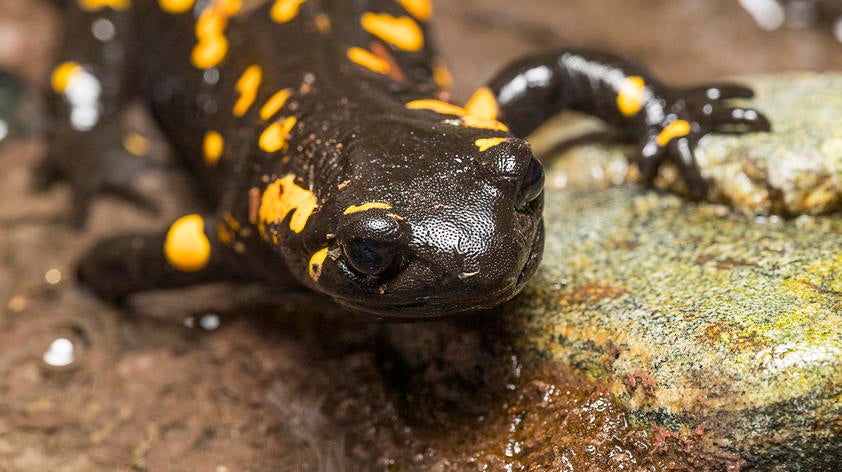
Avoiding a not so fun fungus
Did you know that North America is home to more than 50% of the world's salamander species? These amazing amphibians come in a variety of sizes, shapes, and colors — some don't even have lungs and can breathe through their skin! Salamanders can be found in a variety of habitats and are an important part of their ecosystems’ food webs, but they are starting to disappear.
Under pressure from threats such as habitat loss and degradation, these unique creatures have experienced population declines that are shifting some species to a more threatened status. Salamanders are also vulnerable to a deadly fungus known as Bsal, short for Batrachochytrium salamandrivorans.
Bsal is a chytrid-type fungus that is very similar to the one that has caused worldwide declines in frog populations, including the California native, mountain yellow-legged frogs. While it can also attack frogs, Bsal prefers salamander hosts. Its scientific name translates to “salamander-eating” and, once infected, the fungus damages and destroys the salamander's skin barrier. Chytridiomycosis, the name of the disease caused by the fungus, is almost always fatal — especially for the 18 species that rely on healthy skin to breathe. The fungus has the potential to spread quickly and can kill a salamander in as little as two weeks.
This deadly fungus has origins in Southeast Asia and was introduced to Europe through the pet trade around 2008, where it has decimated European salamander populations. Until recently, almost 99% of salamanders being imported to the United States were from Asia. To avoid repeating a Bsal outbreak like the one seen in Europe, the U.S. government banned the import of over 200 species of salamander that could potentially carry the fungus.
Fortunately, Bsal has not reached North America, and continued screening efforts will help keep it that way. Even after the 2016 import ban, researchers have continued to screen for the presence of Bsal in North American salamander populations. These researchers are from multiple government agencies, including the U.S. Fish & Wildlife Service and the U.S. Geographical Survey, as well as private organizations, like San Diego Zoo Global.
San Diego Zoo Global is doing its part to prevent an outbreak. All animals that arrive at the San Diego Zoo and Safari Park go through a 30-day quarantine period. This quarantine period helps ensure that the new animals are healthy and not carrying something infectious like Bsal that could be introduced to the animals that already reside at the Zoo or Safari Park. This process is especially important when the incoming animal has an unknown medical history such as when we receive animals that have been confiscated from the illegal wildlife trade.
During quarantine, new animals receive a complete physical exam from the veterinary team where samples are collected for testing.
This is where my team and I in the clinical laboratories at the San Diego Zoo & Safari Park come in. We screen fecal samples for parasites. We evaluate blood samples by looking at the cells and running chemistry panels in the same way your blood would be analyzed in a human hospital. Swabs of an amphibian's skin are collected and sent to the Amphibian Disease Laboratory at the Institute for Conservation Research, where they are tested for frog and salamander chytrid fungi like Bsal.
After all of the results come back and the animal is given a clean bill of health by a veterinarian, it is cleared to leave quarantine and to move into its new home. If that animal happens to be a salamander, it’s likely to end up as a neighbor to the reptiles in the Zoo's Reptile Walk area — so be sure to stop by and say hello sometime!
Christopher Smith is a clinical laboratory technician at San Diego Zoo Global (SDZG) and a graduate student in the Advanced Inquiry Program through Miami University (Oxford, OH) in affiliation with SDZG.













